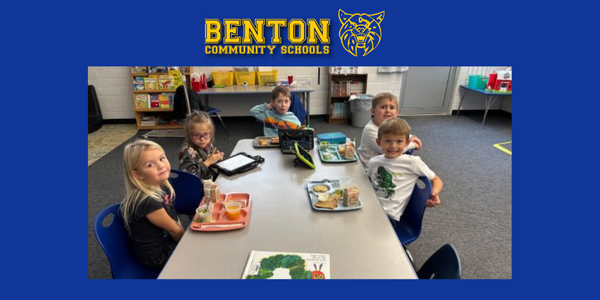Five students came together for lunch and laughter on a recent day at Keystone Elementary. The kindergarten and first-grade students used a variety of communication styles (including speech, gestures, signs, and communication devices.) They talked about their favorite things, the people they love, and the silly words that make them laugh. Simply put, they were kids enjoying the chance to build friendships.
For years, researchers have emphasized the importance of social relationships in school and the positive impact these connections have on academic achievement and mental health. For many children, friendships form naturally. For others, communication and connection can feel more complex. At school, we have both the opportunity and the responsibility to help all students build meaningful relationships. We do this by helping students get to know one another, discover shared interests, and learn communication approaches that work for everyone. Along the way, students begin to recognize the strengths their peers bring to a group and the skills each friend is working to grow. They learn that everyone is practicing something, and everyone shines in something.
As the lunch group wrapped up, one student asked when they could meet again. They wondered whether friends who don’t use communication devices could learn how those devices work, and they made sure everyone’s name was added to their friends’ devices. This was quite a heartwarming experience- watching students with diverse strengths and communication styles come together to build authentic friendships and truly thrive.

